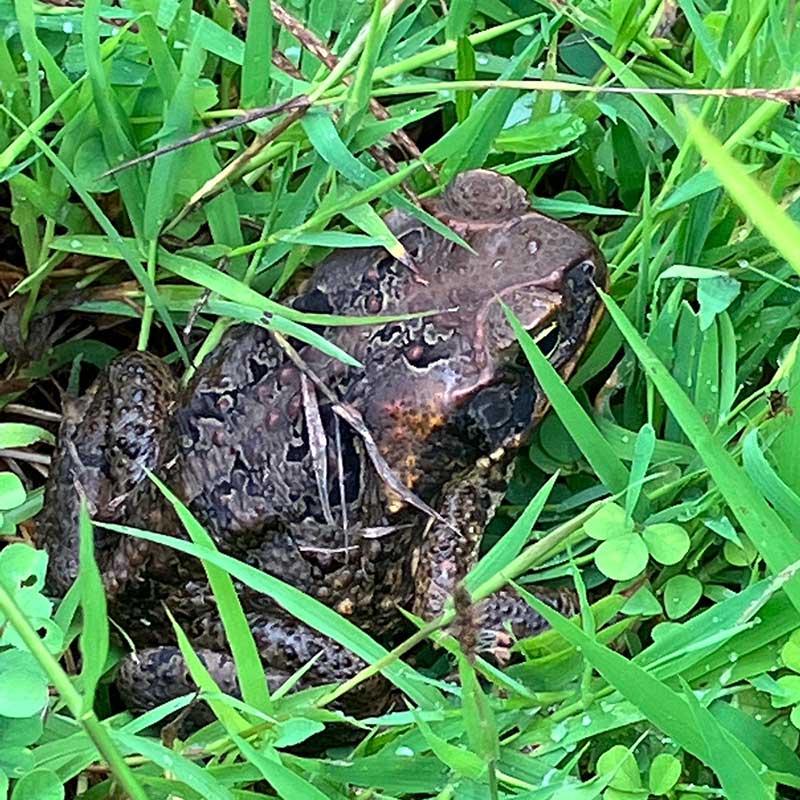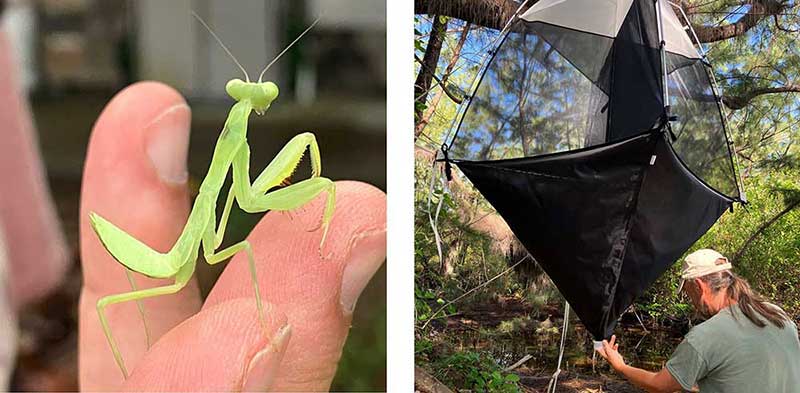Jodey Peyton recently led a scientific expedition to assess the potential impact of invasive non-native species on biodiversity on the island of Diego Garcia. Jodey explains more about the project and what the team found…
In June 2022, I led an international team of scientists specialising in invasive non-native species (INNS) on an expedition to Diego Garcia, an island in the Indian Ocean. Terrestrial biodiversity on Diego Garcia is under-recorded and at risk from INNS, which are a major driver of biodiversity loss. Knowledge gaps around the distribution of invasive non-native species lead to uncertainty in the prioritisation of management actions and conservation planning.
Our project, funded through the Defra Darwin Plus scheme, is helping to address some of these knowledge gaps by undertaking baseline surveys on Diego Garcia for invertebrates, as well as updating the Royal Botanic Gardens Kew plant list. We are also supporting the British Indian Ocean Territory (BIOT) Administration with biosecurity training and planning to prevent invasive non-native species arriving and becoming established on Diego Garcia and the outer islands in the Chagos archipelago.
Among non-native species of concern on Diego Garcia are cane toads (Rhinella marina) which secrete toxins that are poisonous to humans and animals. They are also voracious predators, but we don’t know enough about what they are eating on the island to understand their impact on native invertebrates. Meanwhile, tropical fire ants (Solenopsis geminata) could pose a problem for BIOTs globally important populations of seabirds and turtles because evidence from other parts of the world shows the ants kill the young of these species.

It was a long journey to this remote location. We travelled to Diego Garcia via Bahrain in the Persian Gulf. The time spent in Bahrain gave us the opportunity to prepare a draft biosecurity manual and undertake a pathway analysis for ants for Diego Garcia. When we arrived on Diego Garcia we were eager to get started on fieldwork.
Diego Garcia is around 30 km2 in size, with a large lagoon within the atoll. Once we got to the island, we had three weeks to undertake systematic surveys in plots and opportunistic sampling to collect invertebrates and record plants. We used a range of methodologies for invertebrate sampling, such as using a suction sampler, baited traps, hand searching and sweep netting. The samples we collected will now be identified by members of the team and DNA will be barcoded by the Natural History Museum in London.
As well as carrying out surveys, one of the main purposes of our project is to create species distribution and risk maps that will aid future conservation work. During our time on Diego Garcia we recorded around 60 new plant species for the island and multiple new invertebrates, such as the mantid pictured below.
As well as taking physical samples, we used iNaturalist for making species records. This app is a fantastic way to make opportunistic records throughout the world for a variety of taxonomic groups. We created more than 600 records which were automatically added to the iNaturalist project page set up by Kew for the British Indian Ocean Territory.

One of the many successes of this trip was the engagement we had with people working on Diego Garcia. We co-ran a 'meet the scientists' event, attended by more than 50 people, where we showed some of the insects we had collected. We have also managed to encourage some biological recording by several members of staff who have contributed more records for Diego Garcia, either through iNaturalist or email. This adds valuable data.
We experienced a range of exciting weather during the three weeks we spent on Diego Garcia, from beautiful sunshine during the first 10 days to a tropical cyclone in the last week! Luckily we had completed the majority of our standardised sampling during the first part of our trip, so this more interesting weather didn’t impact our work too much.
Diego Garcia is a stunning place and it is a privilege to have been able to visit and undertake our ecological surveys. We will now produce an updated inventory of invertebrates and design biosecurity training. Collaborating with the BIOT Administration, we will also develop management plans to mitigate impacts of invasive non-native species. We have another trip to Diego Garcia planned for 2023 and are already looking forward to what we might find then.
I would like to thank the funders Defra Darwin Plus, the BIOT Administration and the team for their great work on this project. I would also like to thank Zoological Society London, the Chagos Conservation Trust and the Royal Botanic Gardens Kew for sharing their knowledge and expertise with this work.
For more information, go to our Diego Garcia project page.